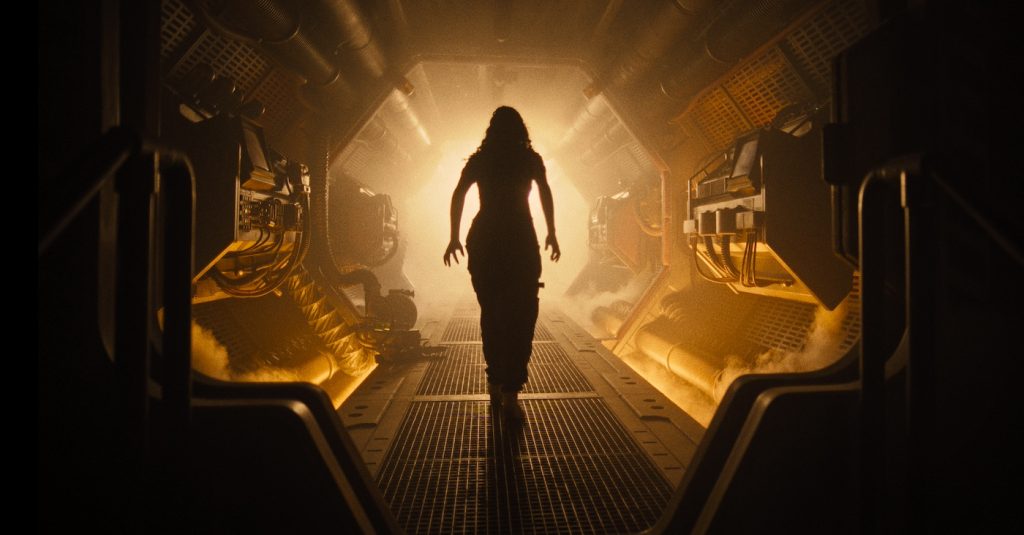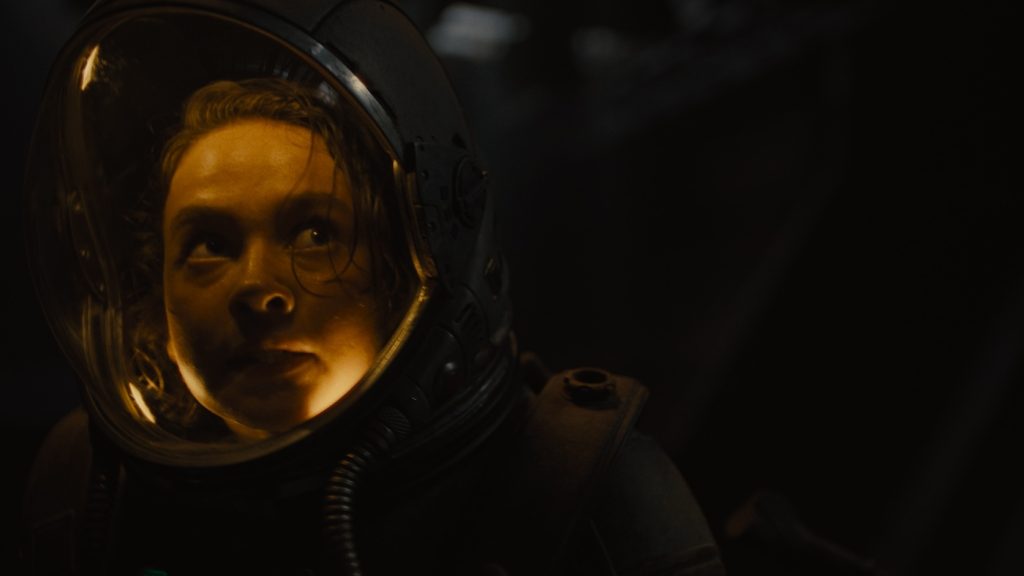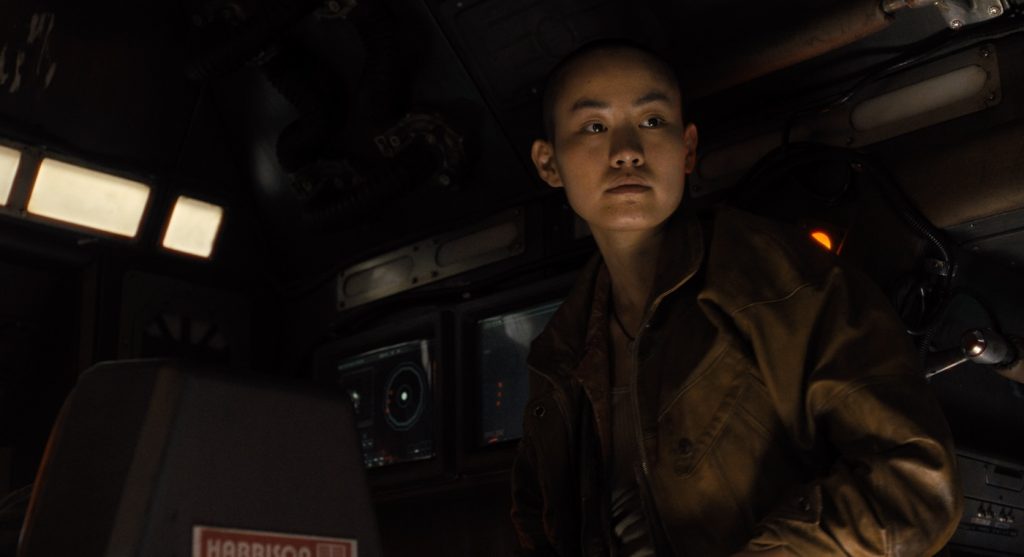Be Still My Bursting Chest: “Alien: Romulus’s” Oscar-Nominated VFX Team on Finding Fresh Horror for the Franchise
Alien: Romulus Visual Effects Supervisor Eric Barba and FX Designer Alec Gillis bring the past and future together. Set between the events of Ridley Scott’s ferocious opener Alien and James Cameron’s muscular sequel Aliens, Barba, Gillis, and their team fused the tangible, practical horror and decay of the original films with a more modern, rock-and-roll sensibility. The viscerally immersive results earned the film an Academy Award nomination for Best Visual Effects. It’s part of a slew of horror films that were nominated for Oscars this year, a welcome coup for lovers of the often-overlooked genre (at least when it comes to awards season).
Barba, along with Nelson Sepulveda-Fauser, Daniel Macarin, and Shane Mahan, is nominated for Alien: Romulus. Director Fede Álvarez’s lean and mean interquel follows Rain Carridine (Cailee Spaeny) and her synthetic brother, Andy (David Jonsson), searching for a better life off their doomed and dreary planet. Along with a young crew, the two journey out into space to scavenge a derelict space station that, at first blush, seems empty. They turn out to be horrifically wrong.
The monstrous aliens in Romulus might be familiar to fans of the franchise, but in the hands of Barba and Gillis, the terrors are fresh and the sequences vividly bold. The pair speak with The Credits about crafting a new chestburster for the ages, dazzling models, and a thrilling zero-gravity sequence.
Eric, a part of the beauty of the Alien franchise is always the brutishness and flaws in its technology—what doesn’t work, what isn’t slick. Were you looking to create flaws in post-production?
Eric Barba: Absolutely. One of the reasons I pushed to make the miniature of the Corbelan [the main ship in the film] and the probe was because when a CG artist gets an amazing model from concept art, the way that model ends up coming out and getting textured and finished is very different than when a miniature model maker makes it. When a crew makes it physically with their hands and paintbrushes, putting all the tiny details on it, it just has a different feel. Those first two films had that in spades. If we were going to sit in between, we needed to lean on it. I called it going back to the analog future, and Fede was constantly pushing us toward that.

Alec, given the franchise’s history, how did you want to bridge Romulus between Ridley Scott’s Alien and James Cameron’s Aliens?
Alec Gillis: I worked on the second one when I was about 25, so this was a warm, fuzzy feeling for me. What we have to do, even though I’m in the practical world, is maintain the visceral feelings you got when you watched those two earlier films, but that we’ve upgraded the technology and the approach. We’re giving the audience something that doesn’t look like it was lifted out of one of those earlier movies. The work has advanced in all ways, in what I do and in what Eric does, so we want to make sure that while it has a callback to those movies, it is a contemporary film.
A very contemporary sequence is the zero-gravity set piece involving Rain shooting the Xenomorphs. Eric, how was that scene accomplished?
Eric Barba: A lot of coffee, a lot of time, because each shot dictates a different technique. For example, for the elevator sequence, we built a two-story vertical set, and then we also built a five-story horizontal set. Imagine the whole elevator essentially on its side, with rigging and rails on the top to fly our actors. The actors would sit in the center of it, and then we’d bring in our cranes to shoot as much as we could. Then you have to add a Xenomorph, and in some cases, the Legacy team couldn’t get their animatronic in there. Depending on the set, we either had to add a CG Xeno or enhance practical elements. Certainly, we were always adding to what we shot – flying debris, making sure her hair was always floating around, whether practically or with CG. There are some CG bits in there where we have a full CG Rain and CG Andy, along with extensions for either side of the set.

The sets were constructed to make the viewer feel as claustrophobic as the characters. For the chestburster scene, it was such a tight space. How did that impact your work, Alec?
Alec Gillis: [Production designer] Naaman Marshall, what he came up with was claustrophobic. We walked in on the set, which they had already been shooting in, and I looked around, going, “Are any of these walls wild?” It’s all steel. [A “wild” wall means that it can be moved easily.]
Eric Barba: It’s on a gimbal.
Alec Gillis: And it’s 20 feet in the air on a hydraulic gimbal. It’s going to feel claustrophobic. We spent a couple of days in advance of shooting that, clearing out some of the framework for [actor] Aileen Wu to sit down. She was below the steel deck with a fake body attached to her, and then we had to puppeteer the little guy. I had a bunch of puppeteers – people under the deck, moving controllers depending on the angle. It reminded me of the fun times I had on older movies. On Friday the 13th: Part IV, Jason gets the machete in his head and slides down it – it felt like we were in a cabin in Topanga with six of us all on top of each other.

Eric Barba: It was like a small car, when you guys would come out, it’d be like clowns. They’d just keep coming.
Alec Gillis: You could easily say, “Well, it’s just a chestburster. We’ve seen a chestburster a lot.” But we tried to put things into it that would make it more organic, more special, and more performative. In addition to that, we had an oversized chestburster as well. It was essentially double scale, with a double-scale chest piece of Aileen. Shoutout to Aileen Wu, who was a trooper in that scene.
Alec Gillis: She played it beautifully, as did Isabela Merced. For me, my creatures depend on the way the actors react to them. If they’re not reacting, my creatures are multitudes less effective.
When you say a “more organic chestburster,” what did that entail?
Alec Gillis: Smoothness of the mechanisms. Listen, nothing will ever beat the first chestburster sequence. Absolute genius. But if you analyze it, turn the sound off, and just look at it, you see they were working with the technology of the time. Now, we can use 3D design programs to create our mechanisms and smooth-moving parts. They’re still cable puppets – like a bicycle brake, when you squeeze it, it pulls a cable. We have joysticks and so on. The movements were much smoother than ever before. We also had some servo-actuated aspects, too. In our double-scale chestburster we had little lip snarls, arm movement, and a sack that pulled off of it.
Eric Barba: It changed color. That part was amazing.
Alec Gillis: Yeah, that was a fun one. I noticed that [Concept Designer] Dane Hallett had done some beautiful artwork of the chestburster. I looked at Dane’s illustration and thought, It’s black this time. That’s interesting. And Fede goes, “Yeah, but I want it to change from fleshy yellow to black.” And I said, “That’s a perfect place for a digital color change.” And he said, “You’re a practical effects artist, so you should really do this practically.” I went, “You’re right. We should figure that one out.”
How’d you figure that one out?
Alec Gillis: We came up with a multilayered dome—a clear, flexible silicone with a paper-thin space between it and the body. We injected dark fluid into a cavity, then suctioned out the clear. You can go back and forth to create a pulsing effect.
For more on Alien: Romulus, check out these stories:
Designed to Shred: How “Alien: Romulus” Costume Designer Carlos Rosario Stylized Horror
“Alien: Romulus” Costume Designer Carlos Rosario’s Retro Vision & Vintage Style Blends – Part One
Featured image: Xenomorph in 20th Century Studios’ ALIEN: ROMULUS. Photo courtesy of 20th Century Studios. © 2024 20th Century Studios. All Rights Reserved.



